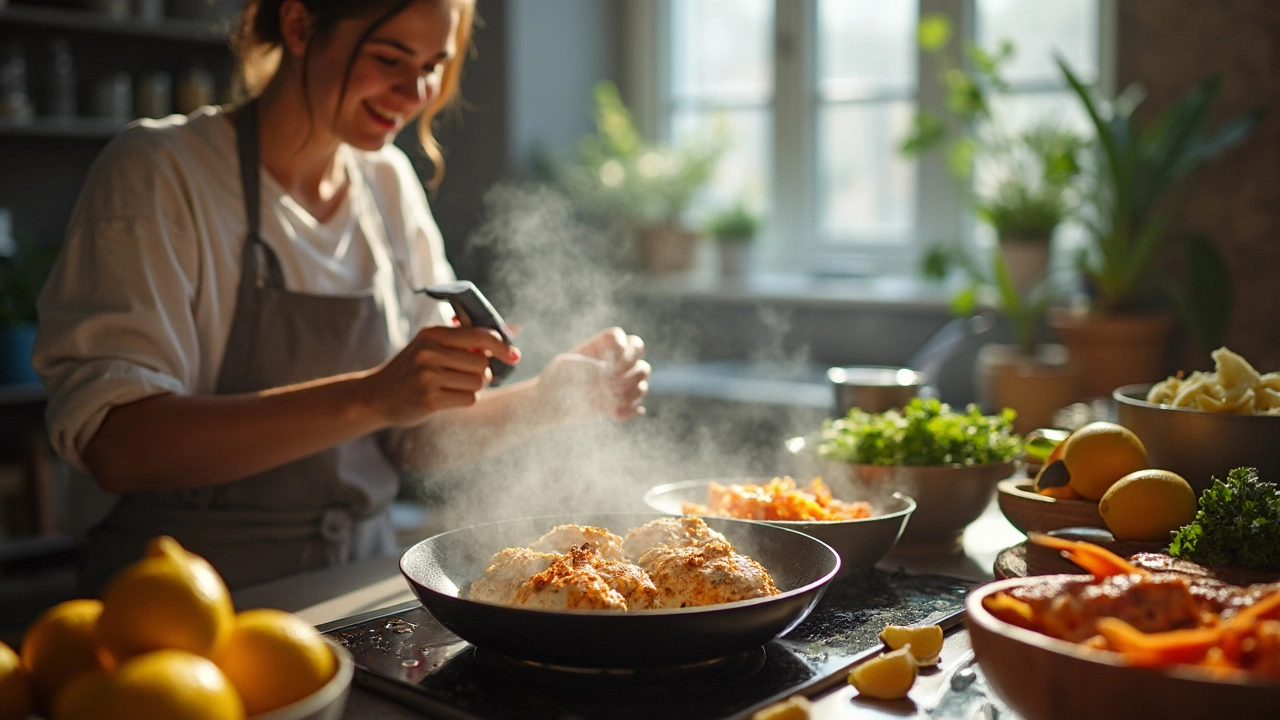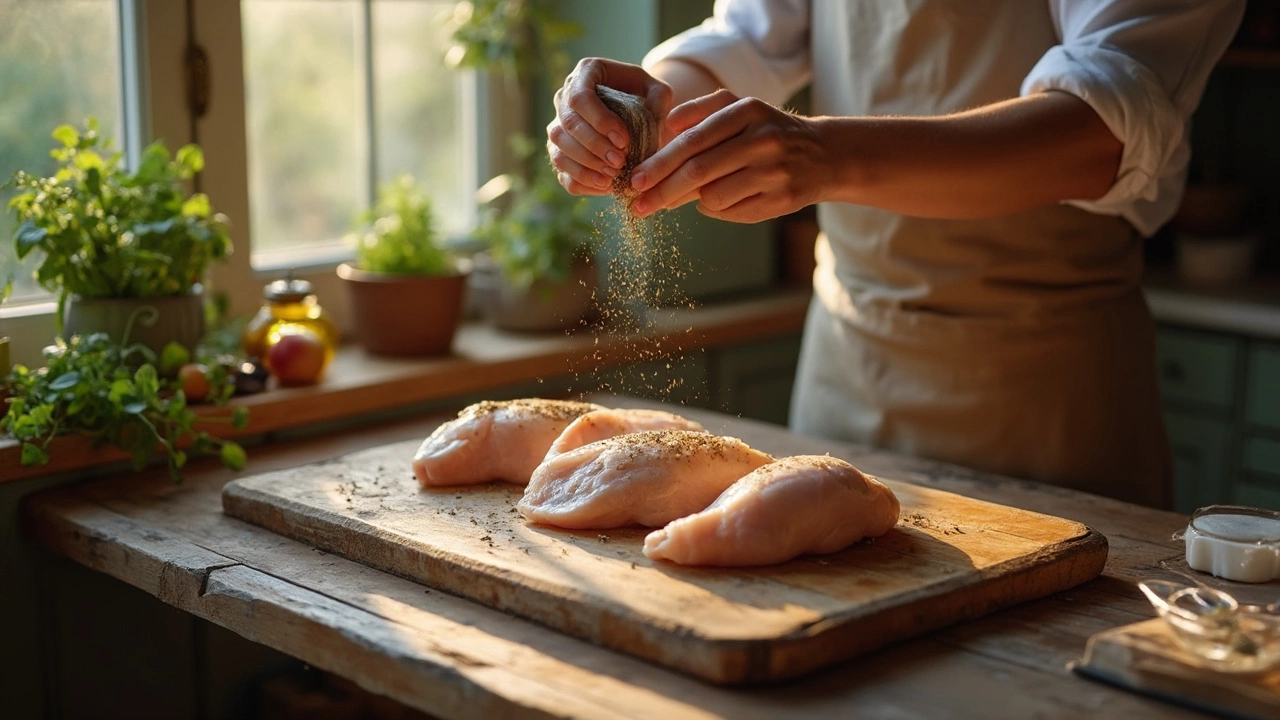Most people secretly dread cooking chicken breast. You stand there, eyeing that gleaming slab of protein, hoping it won’t go dry or rubbery—yet somehow, it usually does. Even though chicken is the most popular meat on British dinner tables (and the world, actually), loads of us slip up on getting it juicy. Ask anyone who actually likes the taste of plain, pan-fried chicken breast, and you’ll probably get an awkward pause. It doesn’t have to be that way. With a few chef-level secrets, even a basic chicken breast can take centre stage, tender and juicy enough to topple any restaurant dish.
The Science Behind Tender Chicken Breasts
Here’s a mind-bender: chicken breast is lean—almost no fat to cushion the protein, so it’s very easy to overcook. A dry chicken breast isn’t just disappointing, it’s a chemistry lesson gone wrong. The proteins in chicken start slowly tightening as the meat cooks, pushing out moisture. Go past 75°C (167°F) and those delicate strands lose any tenderness, squeezing out the last drops of juice.
Cooking with a thermometer makes a huge difference. Ignore those vague “20 minutes at 180°C” rules. Aim for an internal temp of 72°C (162°F) and rest your chicken for five minutes—the temp comes up the last few degrees, but the meat keeps its juices. Average times are a gamble; my mate Steve once insisted on 35 minutes in the oven, and served us slices of chicken that could qualify as modern sculpture.
Chicken breasts from different sources also behave differently. Supermarket birds are already injected with brine sometimes (check the label—look for “water added” or similar). Free-range or local birds will taste better but might need different attention as they’re often leaner and firmer. The trick? Always start with meat at room temp and never skip patting it dry. Moisture on the surface causes weird steaming, so searing is inconsistent.
| Cooking Method | Approx. Cooking Time | Ideal Temp (°C) | Texture Result |
|---|---|---|---|
| Baking (Oven) | 20-25 min @ 180°C | 72°C | Juicy/tender with good rest |
| Pan Sear | 4-5 min per side | 72°C | Crisp outside, juicy inside |
| Poaching | 10-14 min (gentle) | 72°C | Very tender, no browning |
| Sous Vide | 1-2 hr @ 63°C | 63°C-65°C | Perfectly soft, almost silky |
Prepping for Perfection: Marinating, Brining, and Butterfly Techniques
This is where most home cooks go wrong—tossing a pack of chicken on the tray straight from the fridge. Don’t do it. Treat your chicken breast like it’s about to star in a music video. Take it out at least 30 minutes before you cook. Chicken absorbs flavours more deeply when not ice-cold, and it cooks evenly.
Brining—basically giving your chicken a salty bath—does wonders. Just mix four cups water with three tablespoons salt. Dunk the chicken in and let it hang out for at least 20 minutes (an hour is better, for the patient among us). Science backs this up: the salt changes the protein structure, so it traps water—leaving you with breast meat that’s up to 15% juicier. Got no time? Try marinating instead—think natural yogurt, olive oil, lemon juice, crushed garlic. Acid breaks down meat fibers gently but don’t overdo the soak; too much acid for too long actually toughens the proteins.
For even results, butterfly the breast—slice it horizontally (careful, go slow), and open it up like a book. Now it’s even thickness, so you skip the “dry ends, raw middle” disaster. Nothing turns a fussy child into a chicken lover faster than a slice that’s juicy all the way through. My son Corwin won’t touch chicken if the edges are tough. Since I started butterflying, he devours it without complaint.
- Chicken breast that’s brined or marinated, then brought to room temp, absorbs flavour and stays juicy.
- Cutting to even thickness (butterfly method) avoids the classic overcooked edge problem.
- Marinate for taste, but brine just for moisture—try both if you want to impress dinner guests.
- Don’t rinse brined chicken; just pat it dry with kitchen roll.

Best Cooking Methods for Juicy Chicken Breasts
Let’s get real—cooking methods can make or break your chicken breast. If you live in a busy house like mine, shortcuts save the day, but don’t shortcut taste. The oven is a faithful standby, but pan-searing adds flavour fast. Want nearly foolproof results? Try poaching or, if you’re a gadget fan, sous vide.
Start with baking: Preheat to 180°C, pop your chicken onto a lined tray, drizzled with olive oil and a sprinkle of salt. My friend Elara insists on tucking a bit of butter under each breast, and she’s not wrong—it bastes as it cooks. Always check early at the 18-minute mark. The second your thermometer hits 72°C, pull it out. Resting on a board, loosely covered in foil, lets the juices redistribute.
If you prefer a golden crust, try pan-searing. Heat your pan until it’s almost smoking, add a glug of oil, then lay in the chicken gently. Don’t mess with it—let it cook for 5 minutes before flipping. Finish in the oven for the thickest breasts, so you get both crunch and juice. My mum used to finish hers with a dab of garlic butter right before serving, so the aroma turns into an event.
For a low-fat option, poach your chicken—sounds bland, but if you season the water with garlic, thyme, and a chunk of onion, it’s incredible. Barely simmer, never boil. Thirty seconds at a boil and that chicken’s tough for eternity. Poaching keeps the texture meltingly soft. Slice it on top of salads or stuff into sandwiches and you’ll see what all the fuss is about.
- Oven-bake for consistent results (test with thermometer, rest before slicing).
- Pan-sear for a charred, restaurant-style crust.
- Poach if you want ultimate tenderness and low calories.
- If you own a sous vide machine, cook chicken at 63°C for 1-2 hours—next-level texture!
Extra Touches: Seasonings, Sauces, and Storing Leftovers
No one dreams about eating bland chicken. How you season makes all the difference. Use at least salt and pepper, but rubs or spice mixes can totally change the game. Paprika, chilli flakes, garlic powder—try a smoky barbecue dry rub in summer. Lemon zest with thyme is another top choice.
Sauces can bring dry chicken back from the dead. If you do accidentally overcook, slice thin and douse with homemade gravy, creamy mushroom sauce, or even just a squeeze of fresh lime. My go-to? A dash of Dijon mustard mixed into natural yogurt, tossed with herbs. My wife Elara calls it the “fixer sauce” because it’s saved more than one rushed weeknight dinner.
Don’t forget how you store leftovers. Hot chicken goes rubbery and sad if stuffed straight into plastic. Let it cool, cover loosely for fifteen minutes, then refrigerate. Sliced chicken makes easy wraps, salads, or even pizza toppings for tomorrow. If you need to reheat, sprinkle with water and microwave under a loose cover just until warm—or better yet, toss it briefly in a hot pan with a bit of olive oil. Cold chicken’s not a crime. If it’s cooked right, it tastes great from the fridge.
- Rub your seasonings directly onto dried chicken before cooking for best flavour absorption.
- Don’t underestimate the power of lemon, fresh herbs, or a quick homemade sauce.
- For meal prep, slice or shred cooled chicken breast immediately—it saves time and stays juicy longer.
- Store leftovers in air-tight containers with a paper towel to absorb extra moisture and keep the texture nice.

